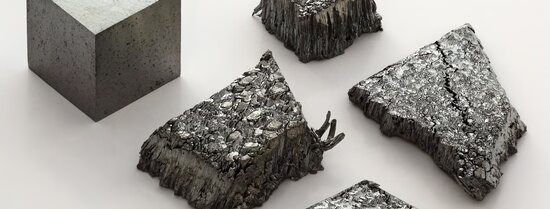- How do state capacity, business power and organizational structure of domestic markets shape the design of industrial policies in resource-rich countries?
- What explains the success of some countries in generating linkages between resource extraction and manufacturing, and what accounts for their failure?
- How effective are the responses of importing countries and their manufacturing industries in securing a stable supply while reducing the socio-environmental costs of extraction?

About the research
Our new global political economy is increasingly defined by ‘critical raw materials’ – of which rare earths elements (or ‘rare earths’) are the most significant.
The ERC-funded, Green Industrial Policy in the Age of Rare Metals: A Transregional Comparison of Growth Strategies in Rare Earth Mining (GRIP-ARM) study examines the globalized supply and demand for rare earths – from mining, processing, manufacturing, use and recycling – to have a closer scrutiny of mining both as a strategy for industrialization and as an integral part of contemporary efforts towards a sustainable supply of raw materials.
GRIP-ARM interrogates the dynamics in rare earth mining that might lend this particular resource a tool for economic development.
The proposed research is one of the first systematic, comparative study on rare earths mining and economic development, which brings political science perspectives in conversation with natural resource geography and international political economy.
The 1st systematic, comparative study on rare earths mining and economic development
Using a trans-regional comparison of China, Brazil and Kazakhstan, the GRIP-ARM project will span across five years, starting from 2021.
The study has three primary objectives:
1. to empirically document how mineral states design industrial policies that have the potential to link extraction and manufacturing sectors of the economy. It will also explore why similar policies yield varying outcomes.
2. Identify the political factors that successfully built linkages between sectors of the economy, spur technological innovation, and maximize benefits from extractive industries.
3. Analyse new initiatives of rare earth importers in the EU and Japan. The project will provide insights on how importing countries and their manufacturing firms have promoted ways to address long-term supply vulnerability and sustainability of resource use.
Why is this research relevant?
Two important trends underline the urgency of this research:
- Firstly, low and middle-income countries joining the race for industrialization are increasing demands for high-tech goods ranging from computers, mobile phones, and flat screens, as well as for low-carbon consumer products, such as energy- efficient cars, solar panels, wind turbines, and even lights – all of which constitute further pressures to accelerate the pace and breadth of natural resource exploitation.
- Secondly, growing demands for rare earths are currently suffering from a supply constraint given that China – the dominant market player in rare earths mining – has begun to impose export restrictions and reorient its mining policy to support domestic industrialization. The impending resource crunch creates incentives for mineral states to gain strategic and economic advantage.
GRIP-ARM’s agenda is especially salient as several rare earth projects are being developed in Latin America, Africa and Asia to create an alternative supply chain outside China. By building an interdisciplinary scholarship on rare earths-based growth strategies, GRIP- ARM contributes to scholarship on innovations in non-traditional manufacturing sectors as key to long-run economic development (Nem Singh & Chen 2018; Ovadia & Wolf 2018; Peres 2013).
Furthermore, GRIP-ARM aims to influence debates on international development by targeting knowledge exchange activities towards key decision-makers involved in Sustainable Development Goals (SDG) No. 7 (Affordable and Clean Energy) and No. 9 (Industry, Innovation and Infrastructure). The project likewise builds on the expertise of an International Advisory Board consisting of international policy practitioners and senior experts in the fields of political economy and development studies.
Another crucial element of the project is that it will create valuable knowledge for the Global Rare Earths Industry Association, which provides inputs on global efforts to create a secured, greener supply of critical raw materials. The study will add to knowledge on how developing countries can seek to build industrial capacity to extract in less environmentally destructive ways. In these ways, the research contributes to the urgent call of designing growth strategies compatible with ecological sustainability.
Collaborations
The project team is led by Dr Jewellord Nem Singh who will supervise 1 postdoctoral researcher and 2 PhD researchers.
Outputs
The project will produce a number of academic outputs including a monograph on ‘Transforming Rare Earths for Industrial Development', articles authored by the project leader, articles co-authored with the PhD researchers (on Brazil and Kazakhstan) and articles co-authored with the post-doc (on China’s Rare Earths policy, industrial policy and building innovation and linkages through china’s mining sector).
Online sessions
Rare Earth Elements: The Global Supply Chain A Q and A with Dr Jojo Nem Singh, 18 July 2022
Related news
Contact

- Email address
- nemsingh@iss.nl
For more information, please contact the project leader, Dr Jojo Nem Singh.
Funding
This project has received funding from the European Research Council (ERC) under the European Union’s Horizon 2020 research and innovation programme under grant agreement No. 950056.
